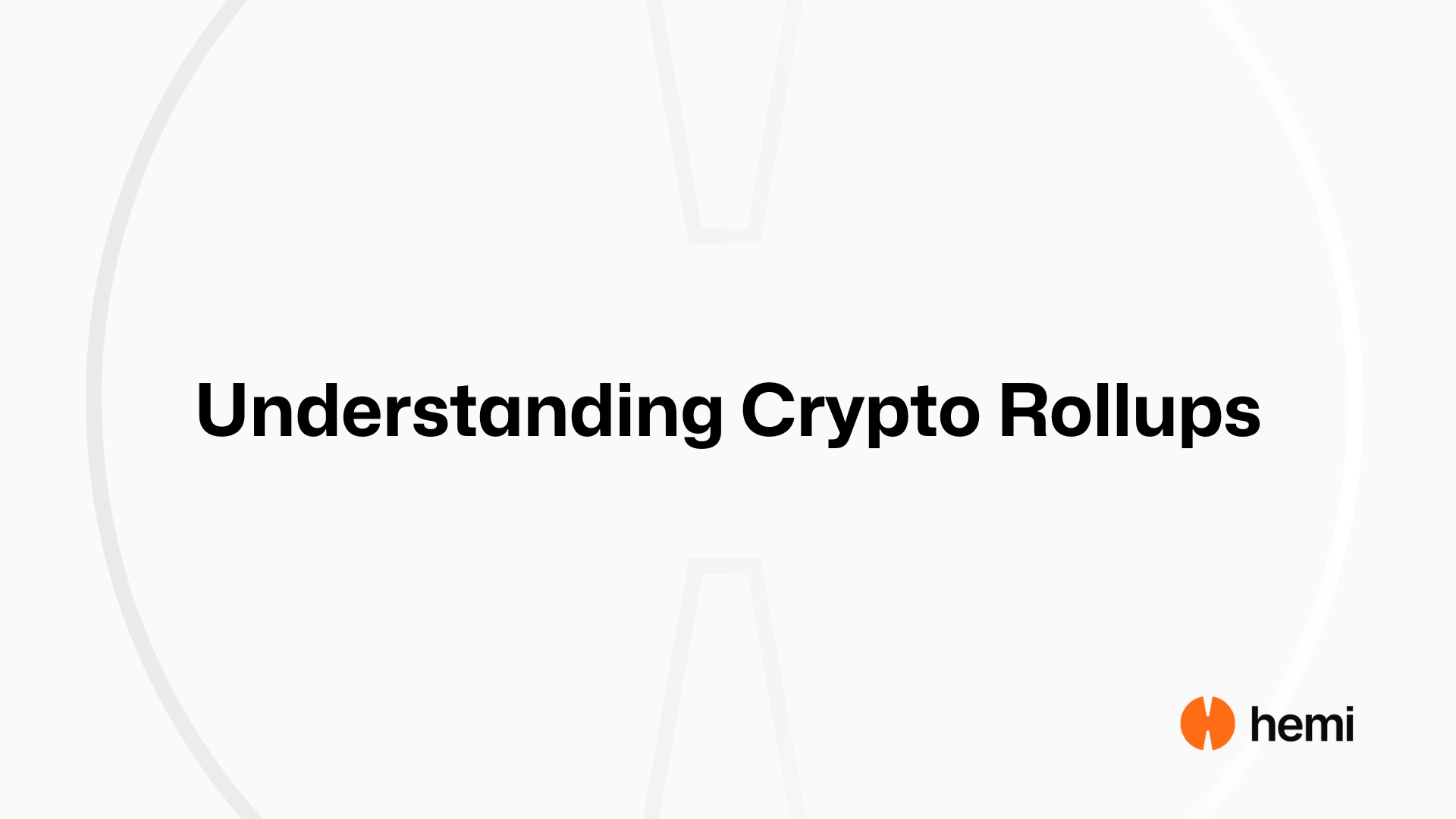- Bitcoin
- Ethereum
- Hemi
- Learn Center
- March 7, 2025
Understanding Crypto Rollups: Optimizing Layer 2 Throughput and Security
How crypto rollups work.

What are Crypto Rollups?
Crypto rollups emerged from the Ethereum ecosystem as a way to scale blockchain systems without giving up the core principles of decentralization and security. They operate as Layer 2 (L2) solutions that bundle or “roll up” multiple transactions and post proofs of those transactions to a Layer 1 (L1) blockchain like Ethereum. The L1 chain provides a secure and immutable foundation, while the L2 rollup handles computation and storage off-chain.
Rollups work by leveraging the trust and security model of the Ethereum Virtual Machine (EVM). Rather than running every transaction on the main chain, rollups execute and bundle transactions off-chain, then submit a summary back to Ethereum. This allows the system to reduce network congestion and transaction fees while inheriting the security guarantees of Ethereum.
There are two main types of rollups: Optimistic Rollups and ZK Rollups. Each uses a different method to ensure that off-chain transactions remain valid and secure.
Optimistic Rollups
Optimistic Rollups assume that all off-chain transactions are valid unless challenged. This model relies on a dispute system—called fraud proofs—to verify correctness. Validators have a fixed time window, usually seven days, to contest any suspicious activity. If no one disputes the data, the transaction is finalized.
The benefit here is scalability. By offloading work from the main chain, Optimistic Rollups can significantly increase transaction throughput. However, this comes at the cost of delayed finality. Users must wait for the challenge window to close before considering a transaction fully confirmed. For some use cases—like trading or gaming—this delay can be a drawback.
ZK Rollups
ZK Rollups take a different path. They use zero-knowledge cryptography to prove that a batch of off-chain transactions is valid. Instead of relying on a challenge period, ZK Rollups generate a cryptographic proof that verifies all rules were followed. This proof is posted to the Ethereum mainnet along with a summary of the transaction batch.
Because the proof is final upon submission, ZK Rollups offer fast finality and strong security. They also provide better privacy, as not all transaction details must be revealed on-chain. However, generating zero-knowledge proofs is computationally expensive and technically challenging. These costs make development slower and more complex, which has limited the number of projects using this approach.
Rollups have become an important part of Ethereum’s scaling roadmap. They offer a compromise between performance and security by moving computation off-chain while preserving trust through proof systems. Optimistic Rollups prioritize simplicity and scalability, but with slower finality. ZK Rollups offer faster confirmation and privacy benefits, but they require more advanced technology to implement. As these systems evolve, rollups are likely to play a central role in how blockchains handle higher volumes of activity without weakening their security foundations.